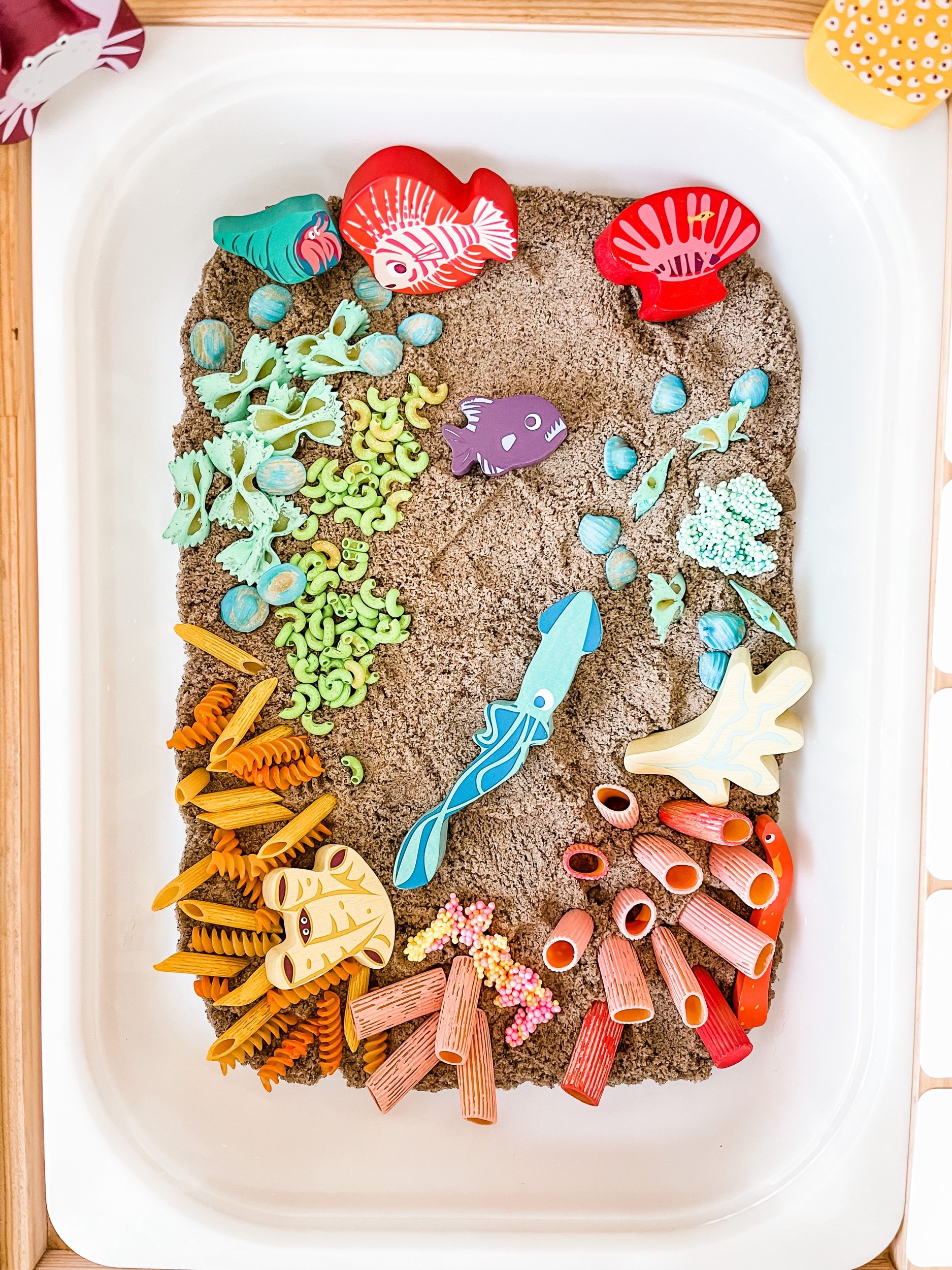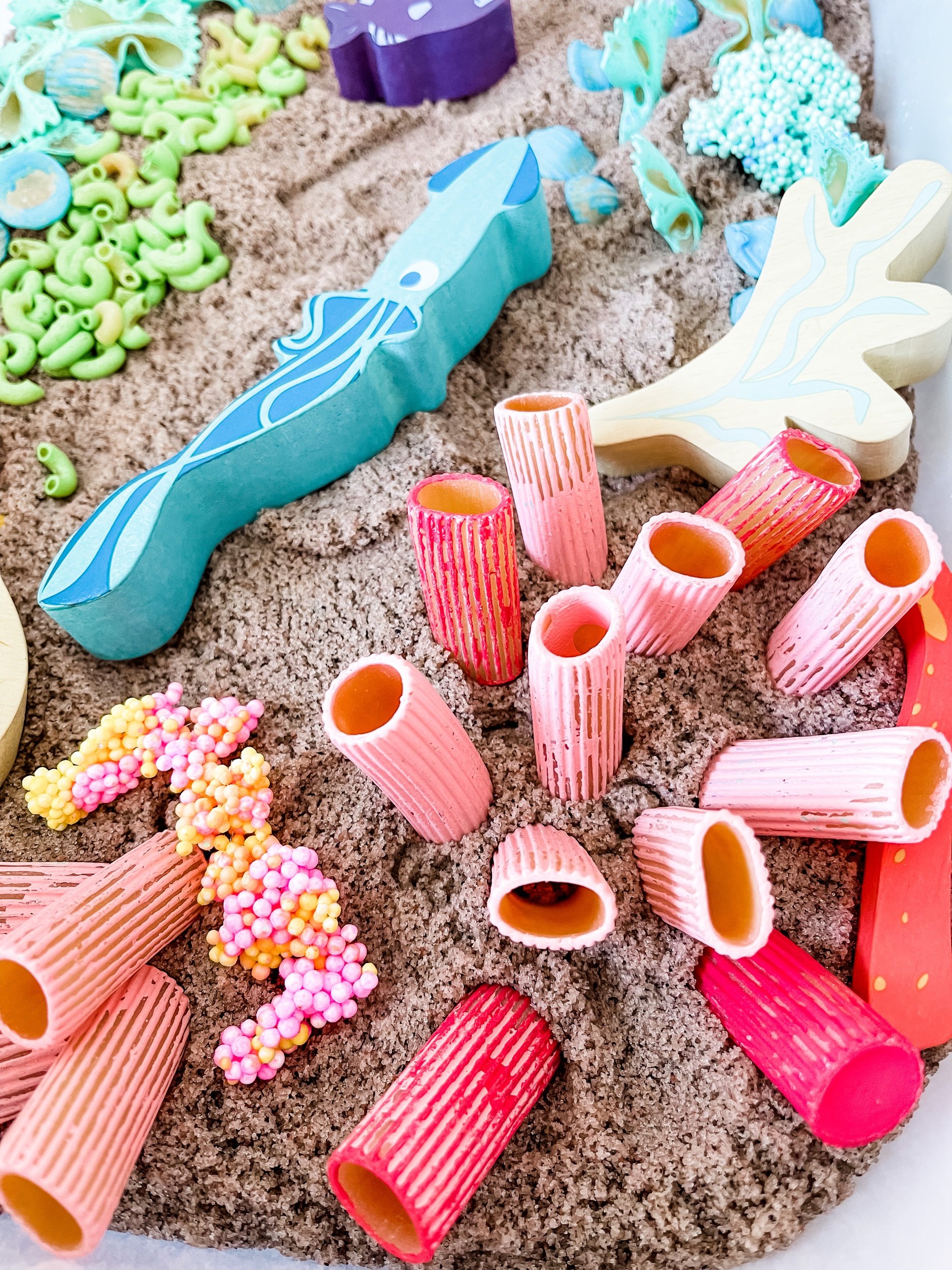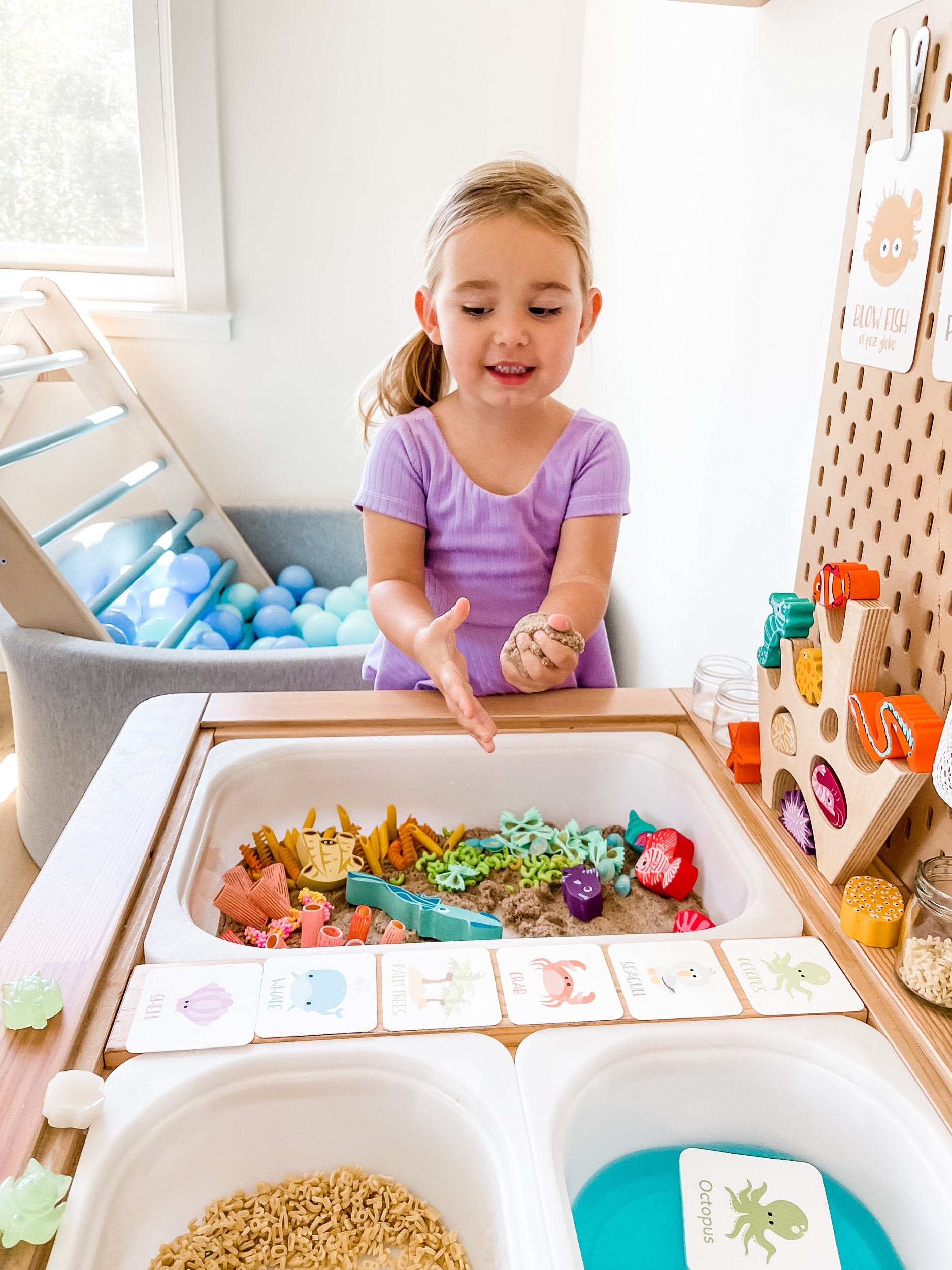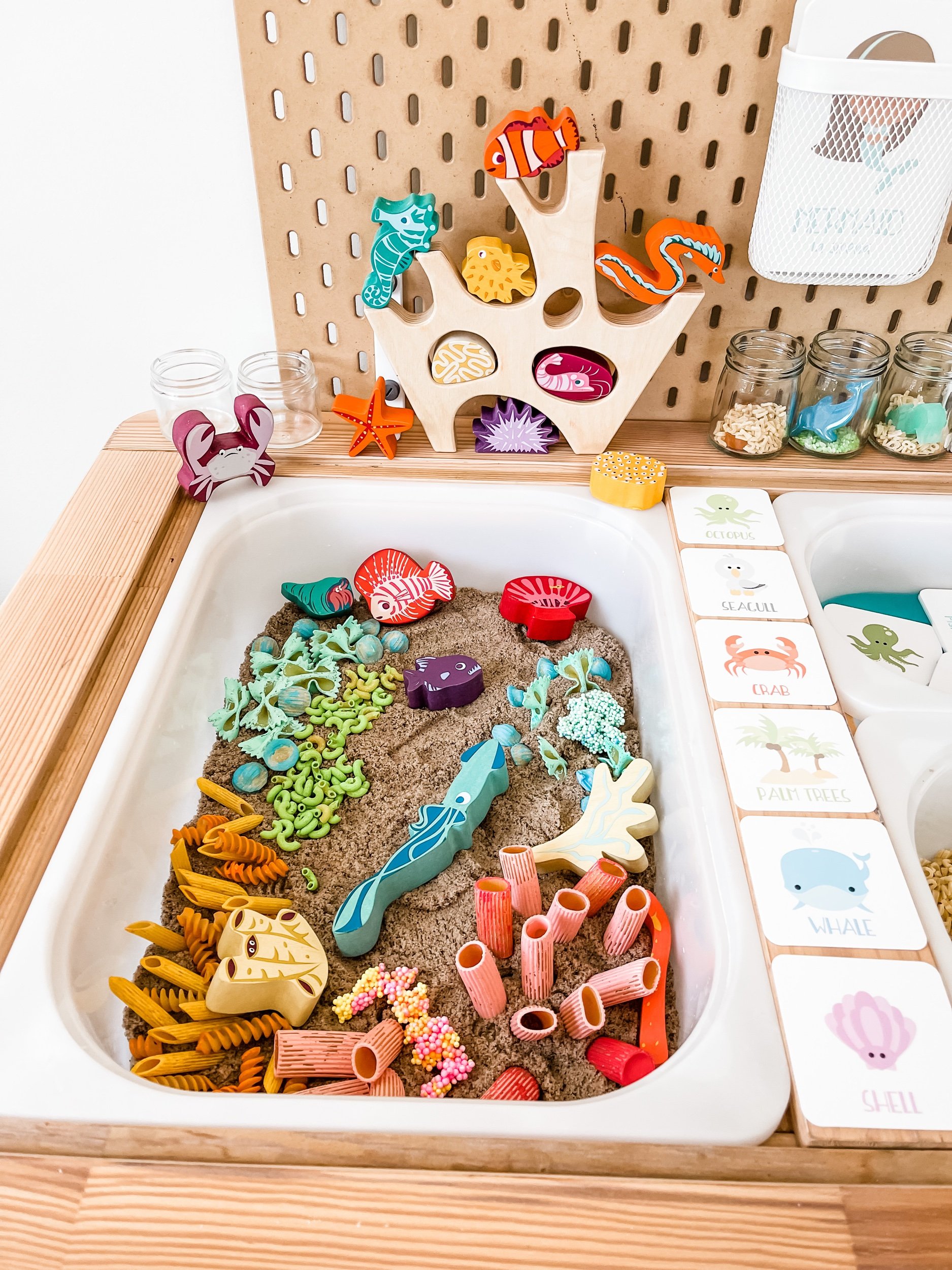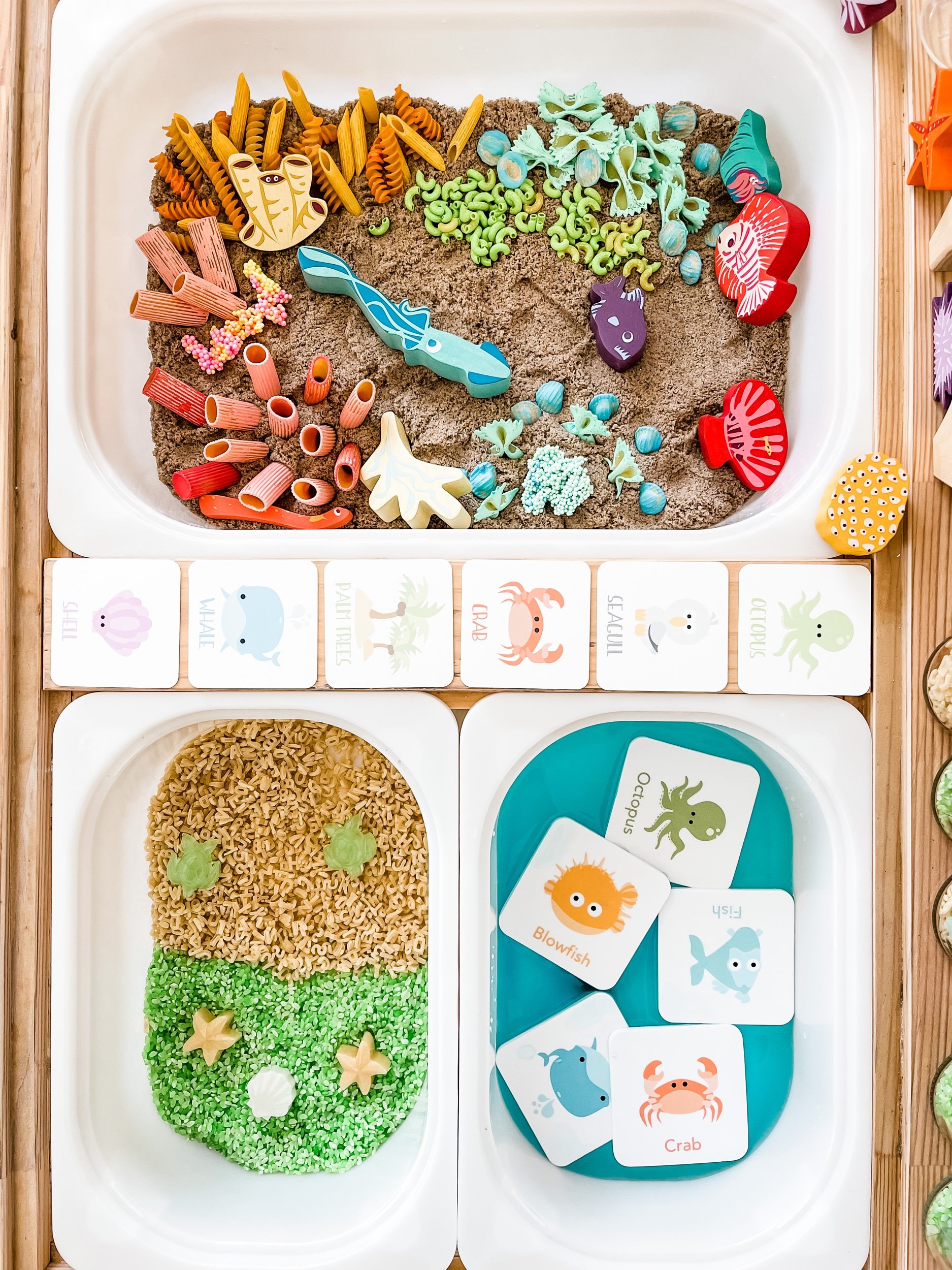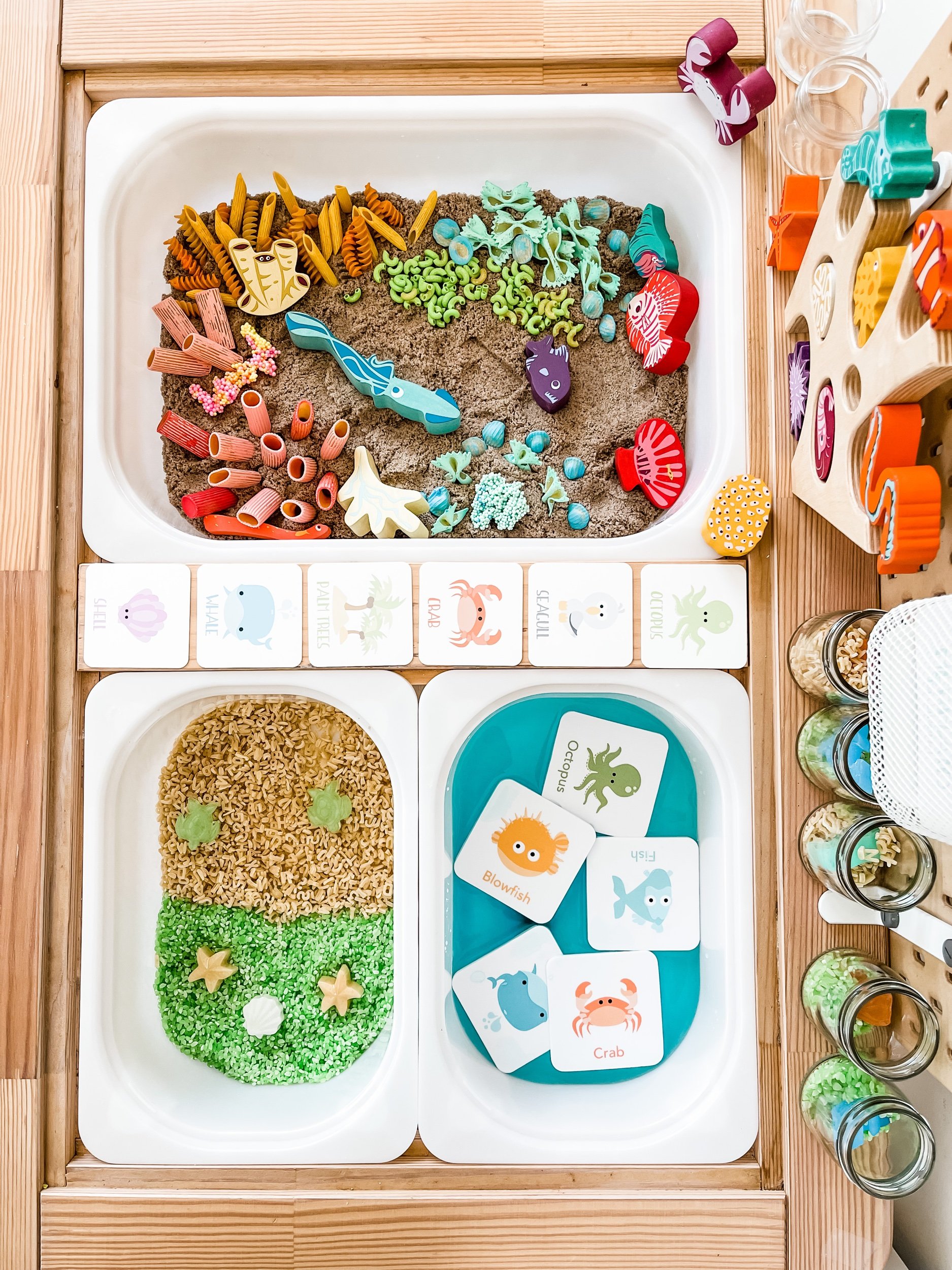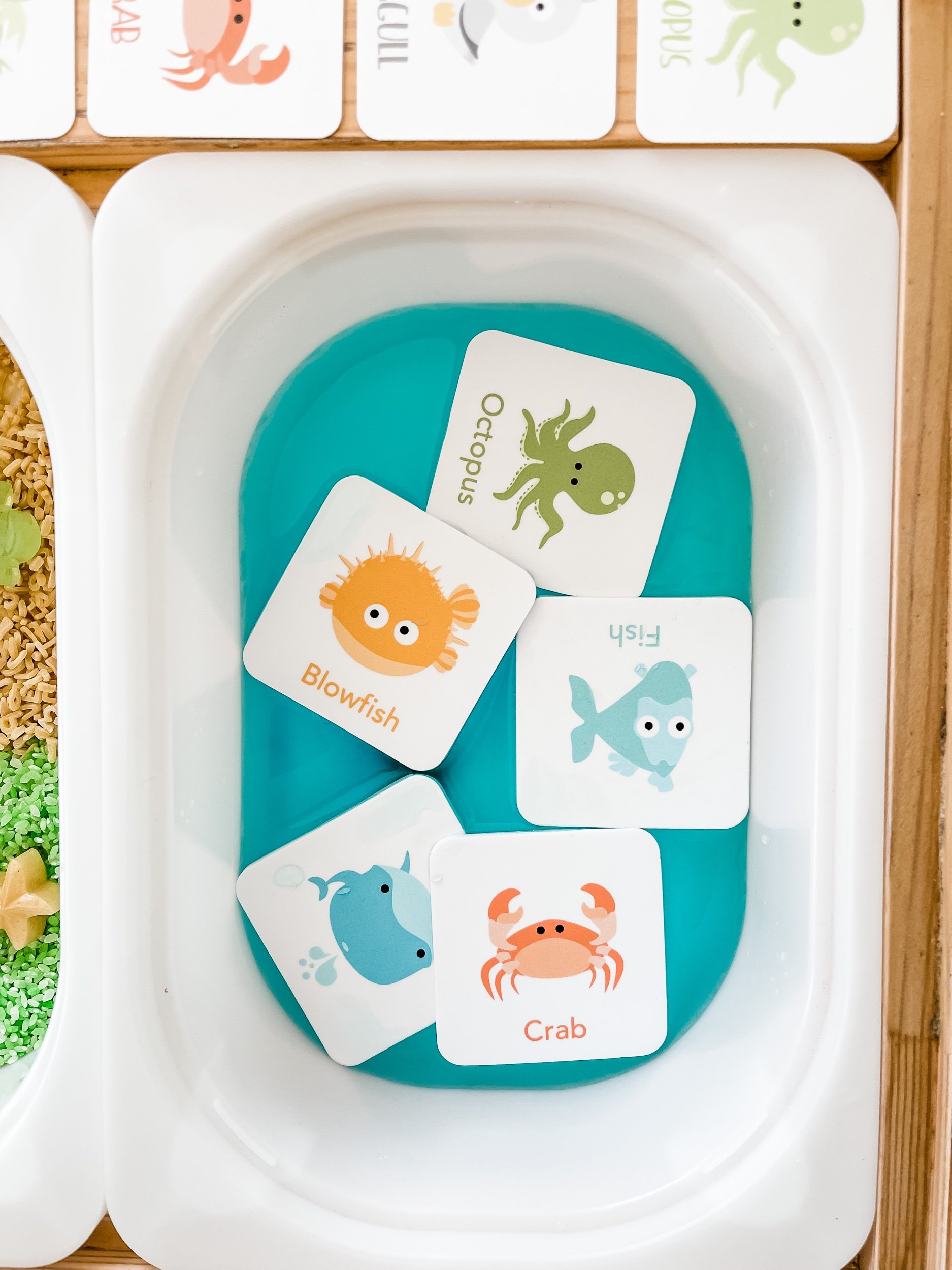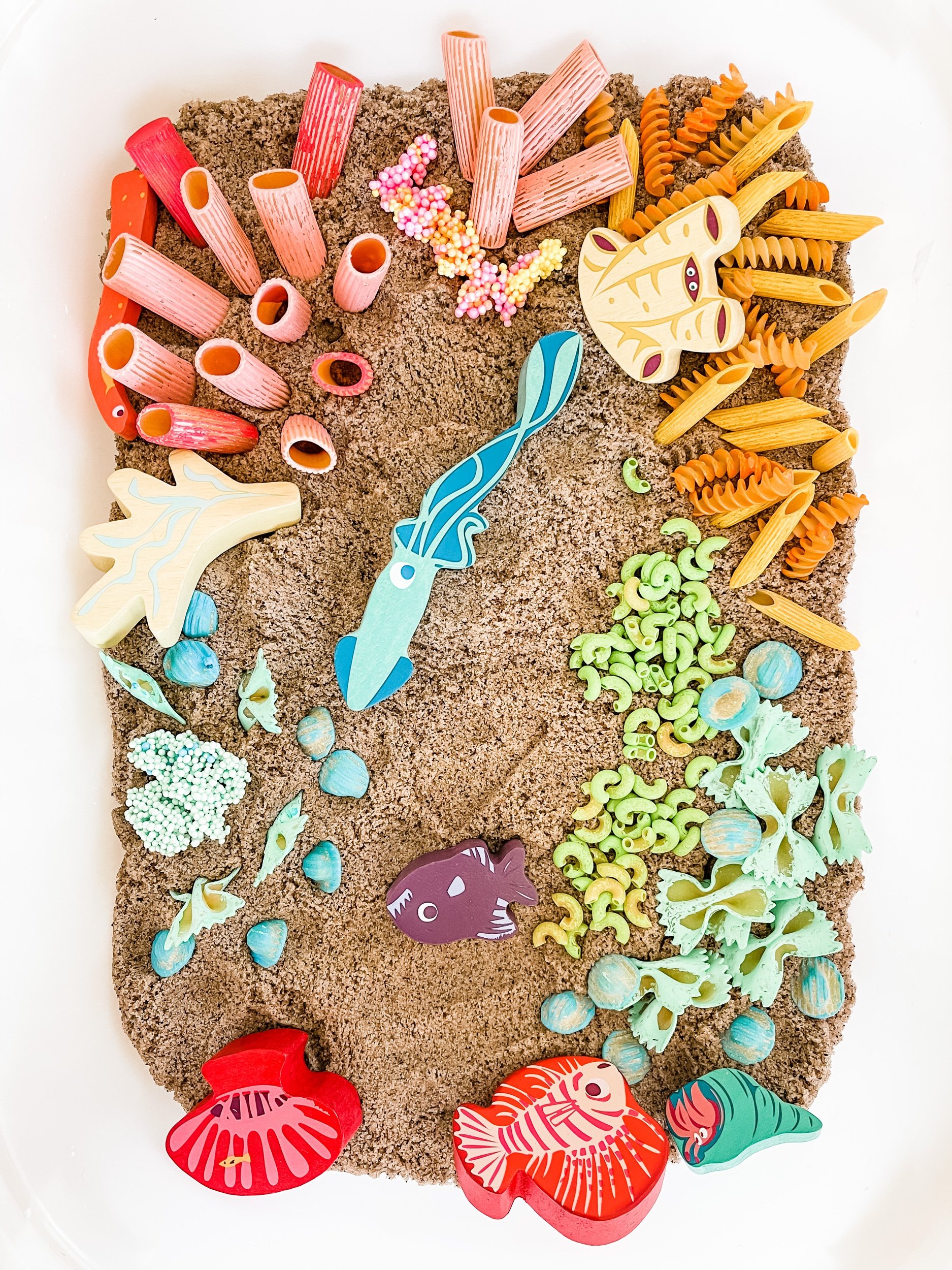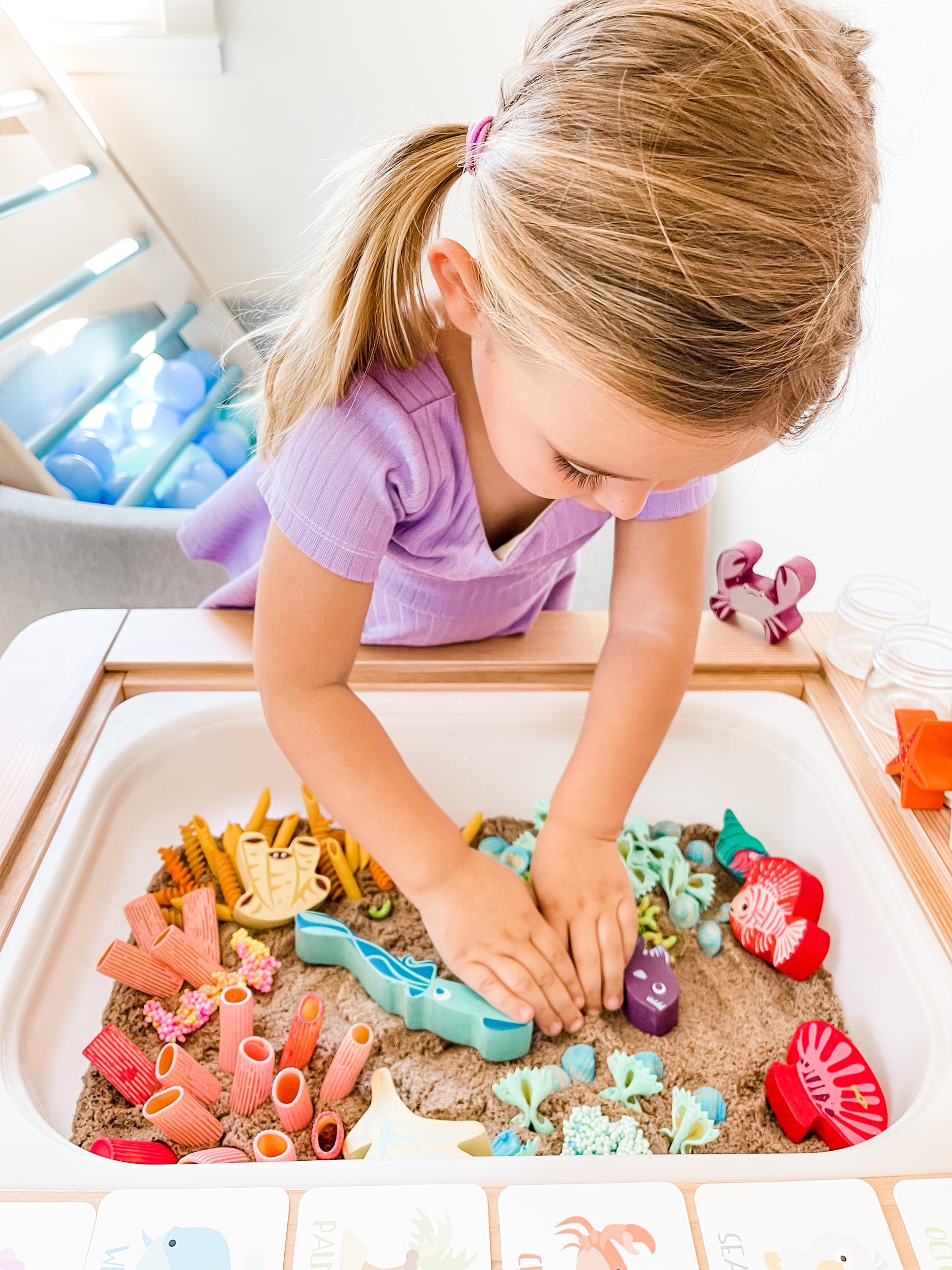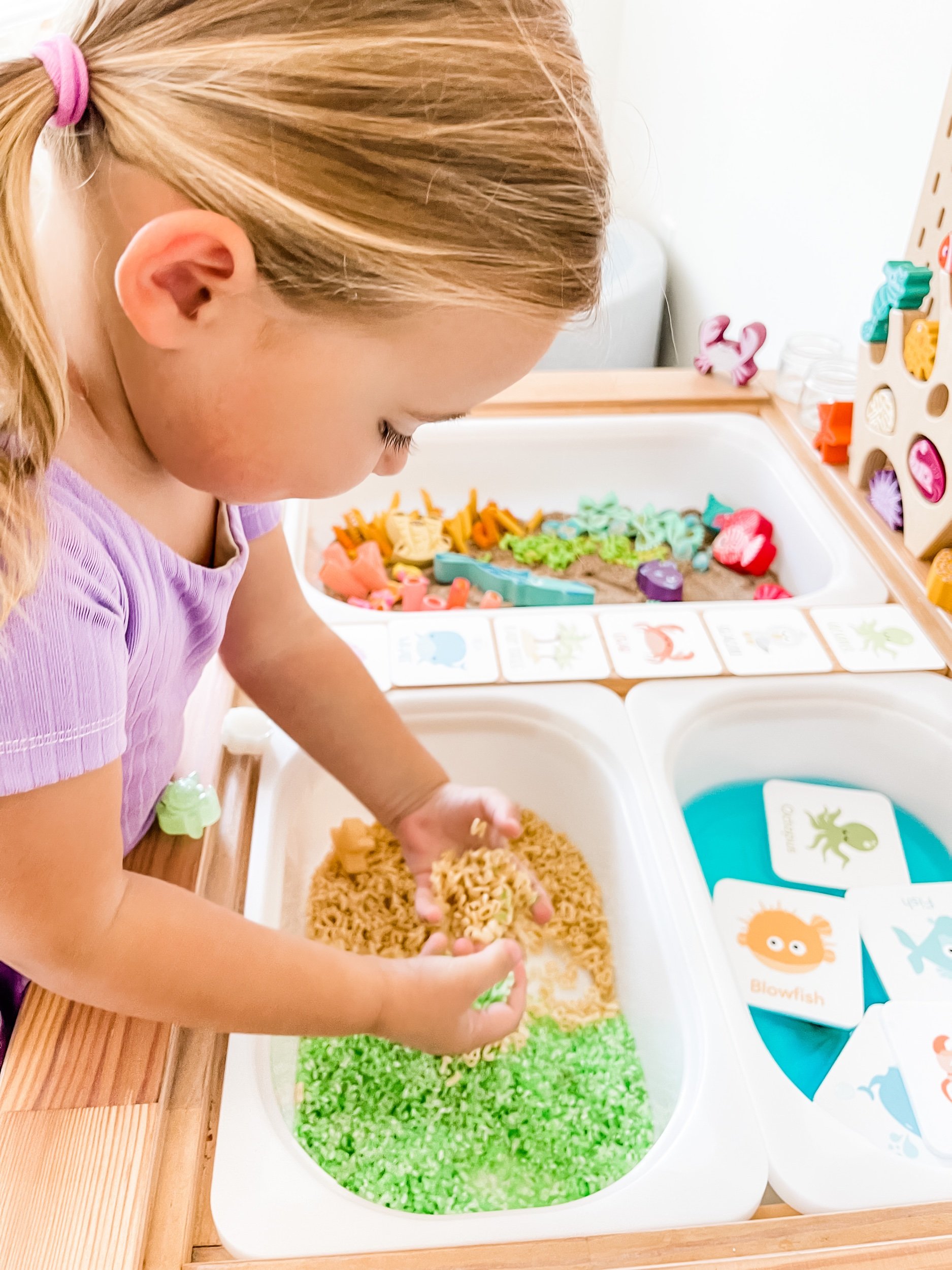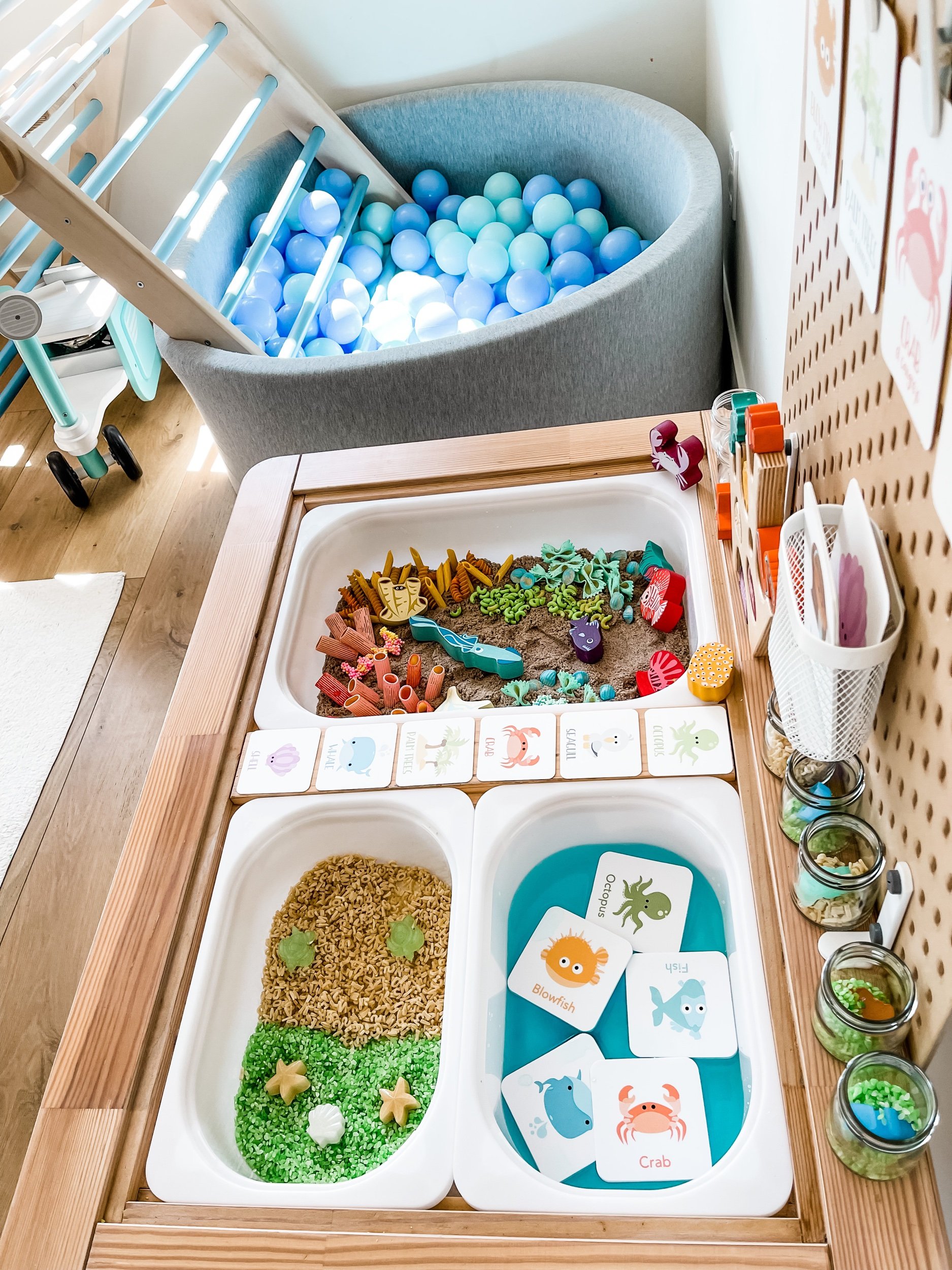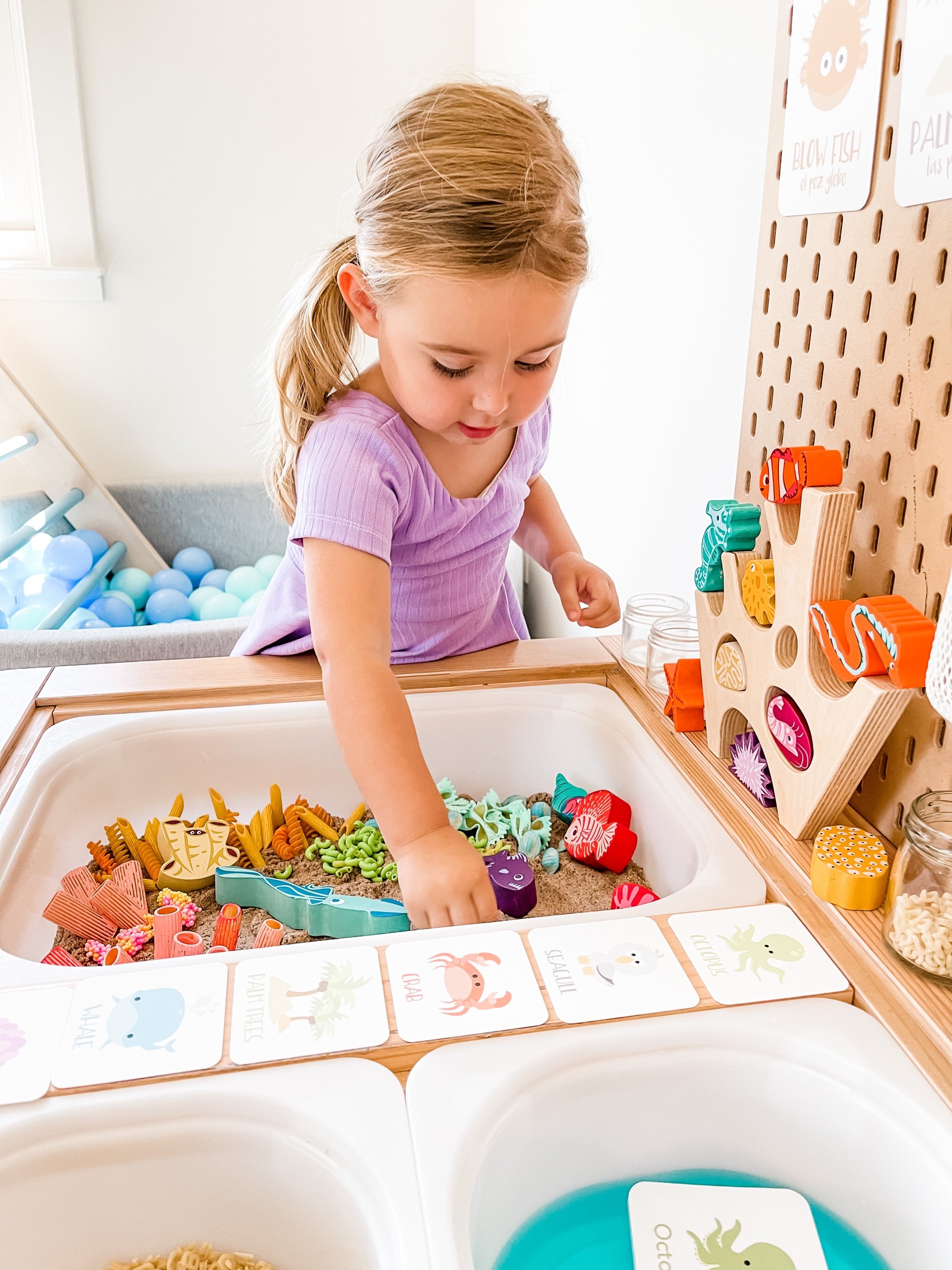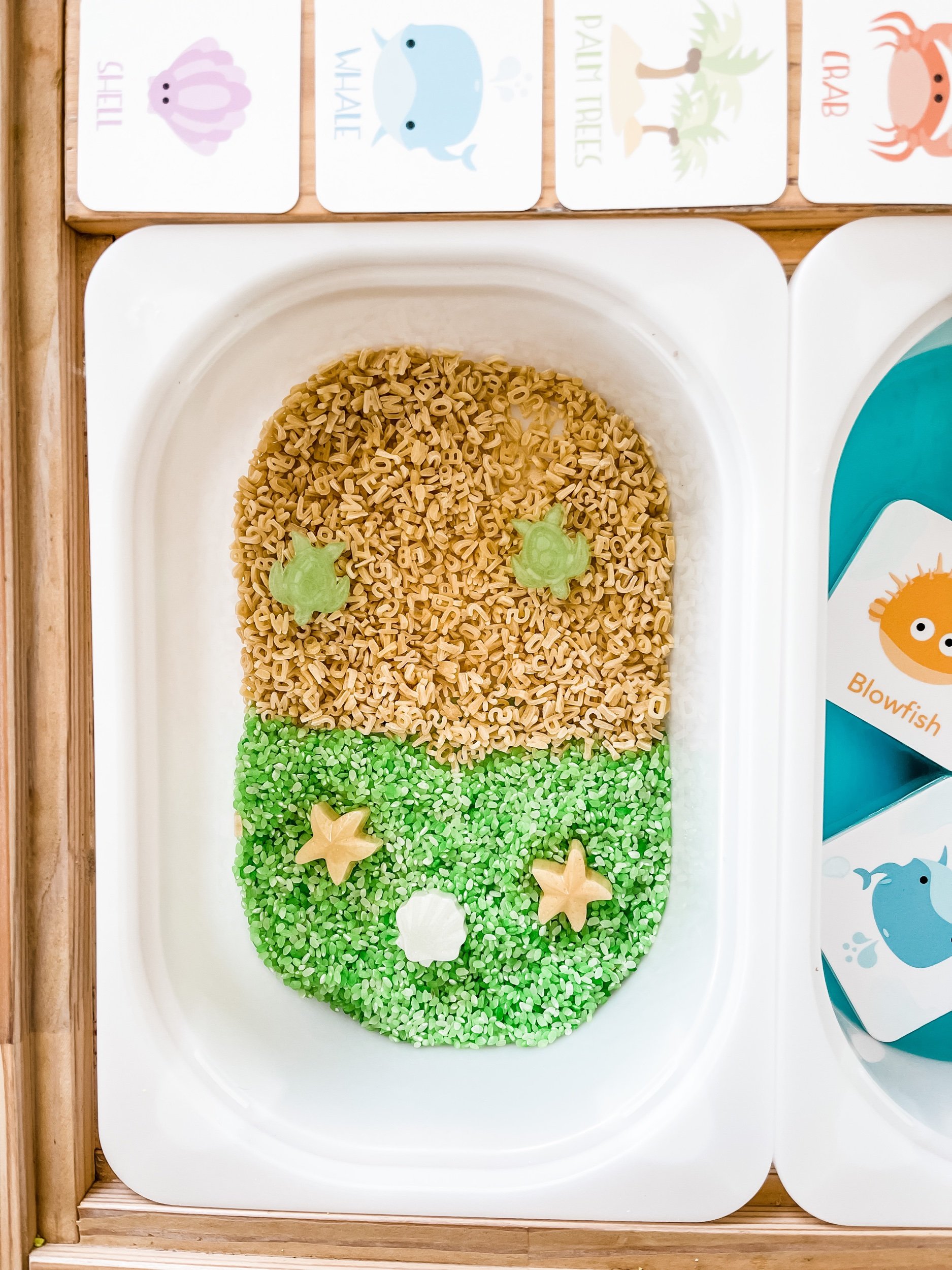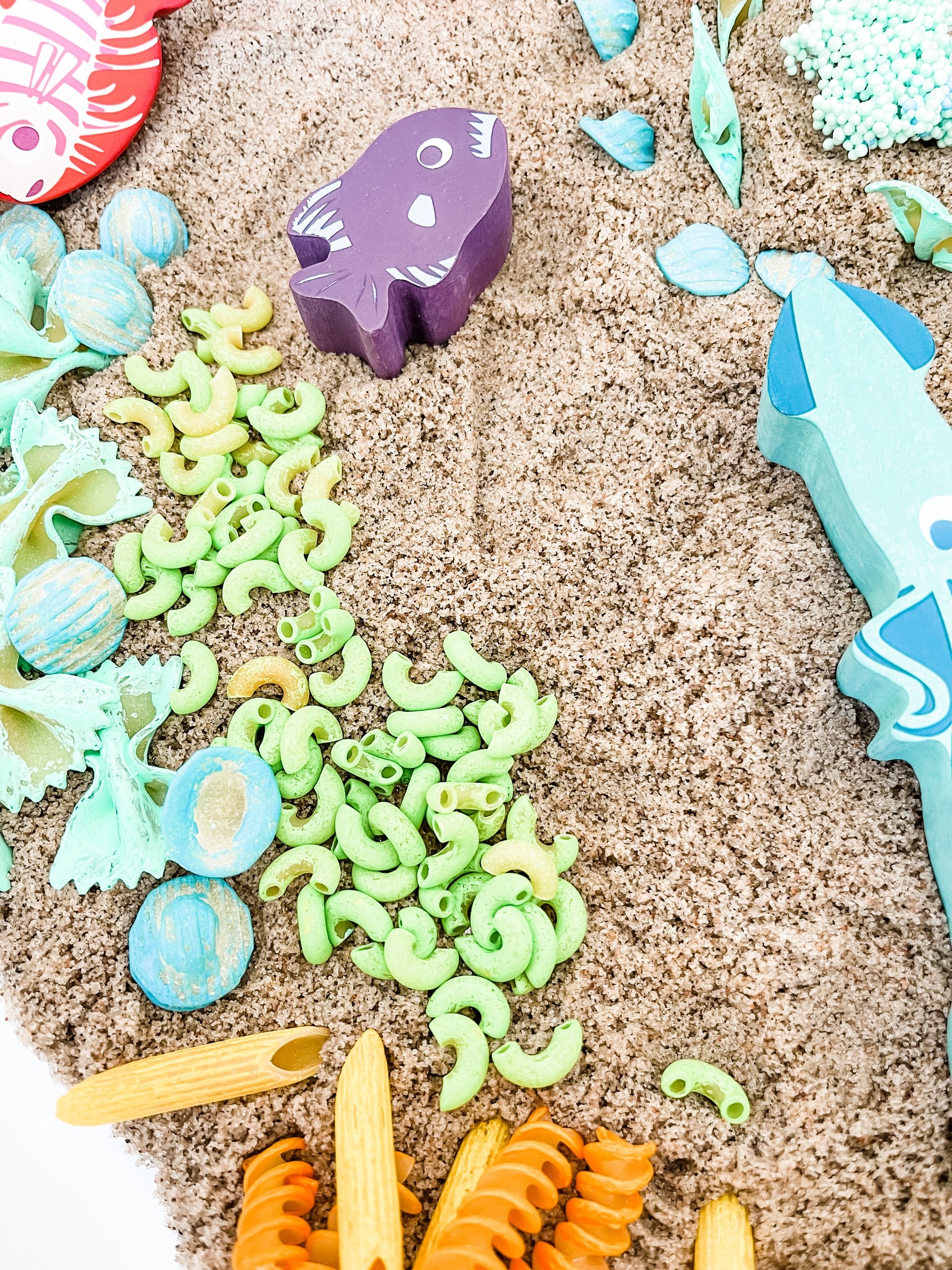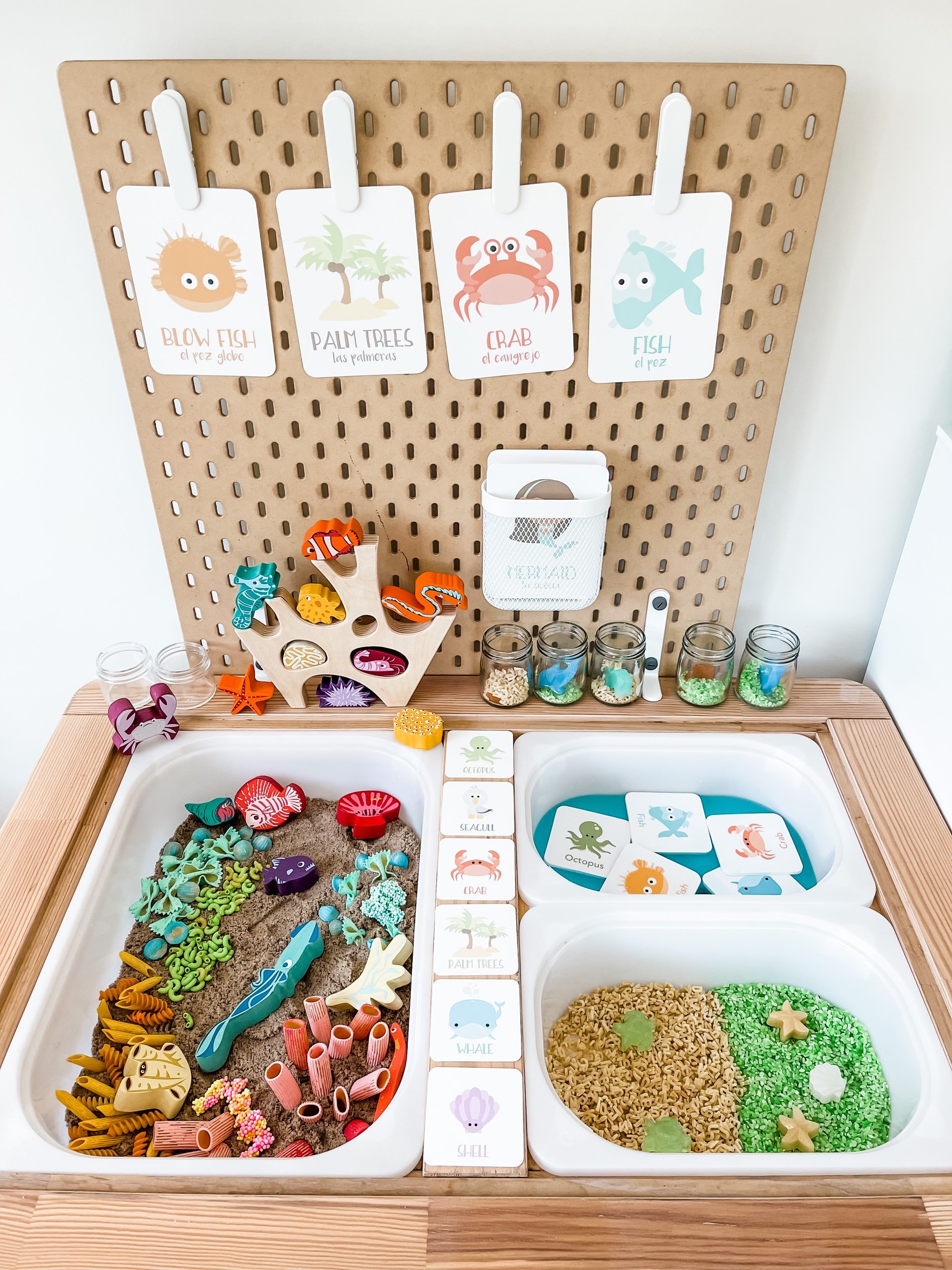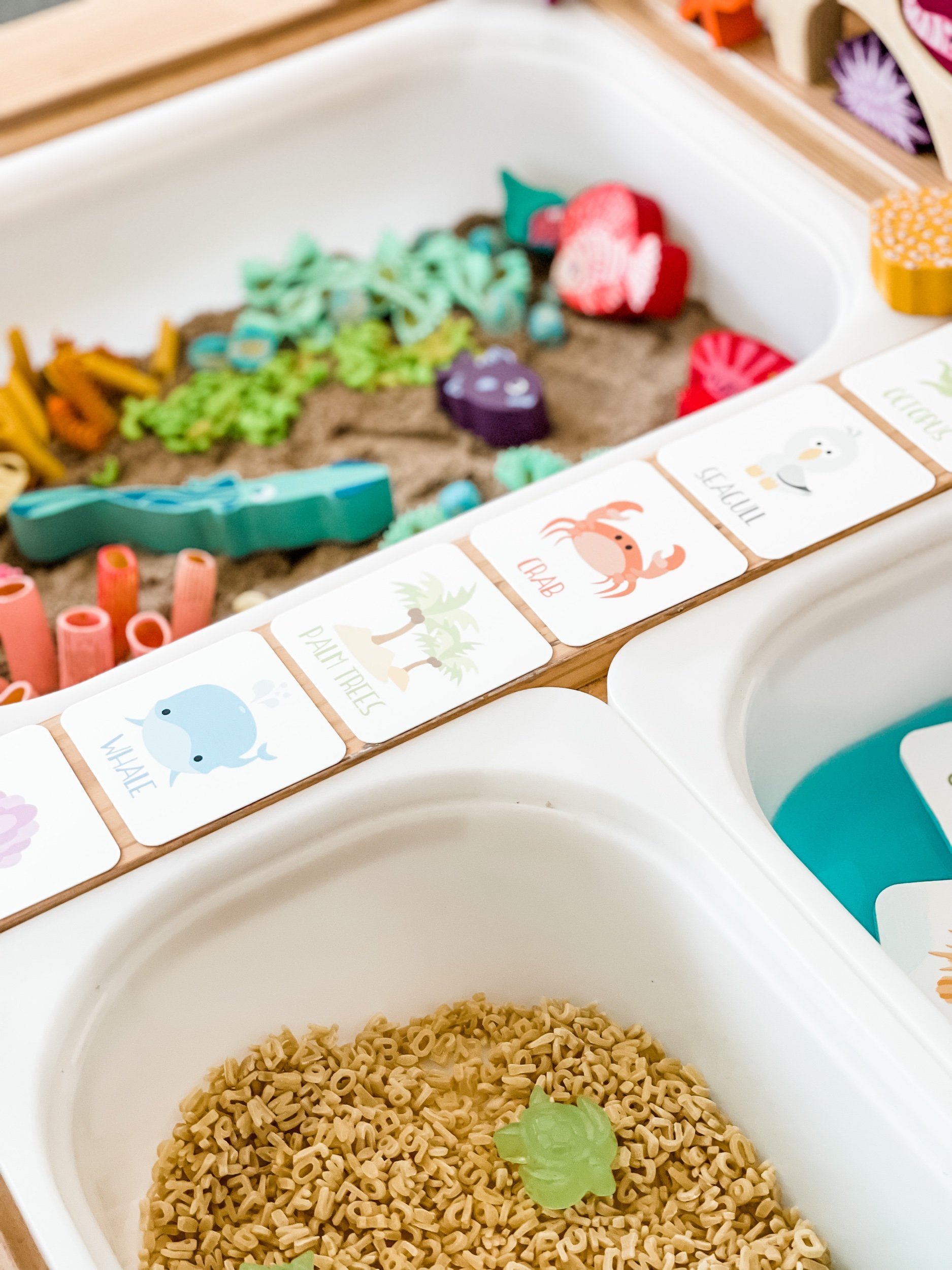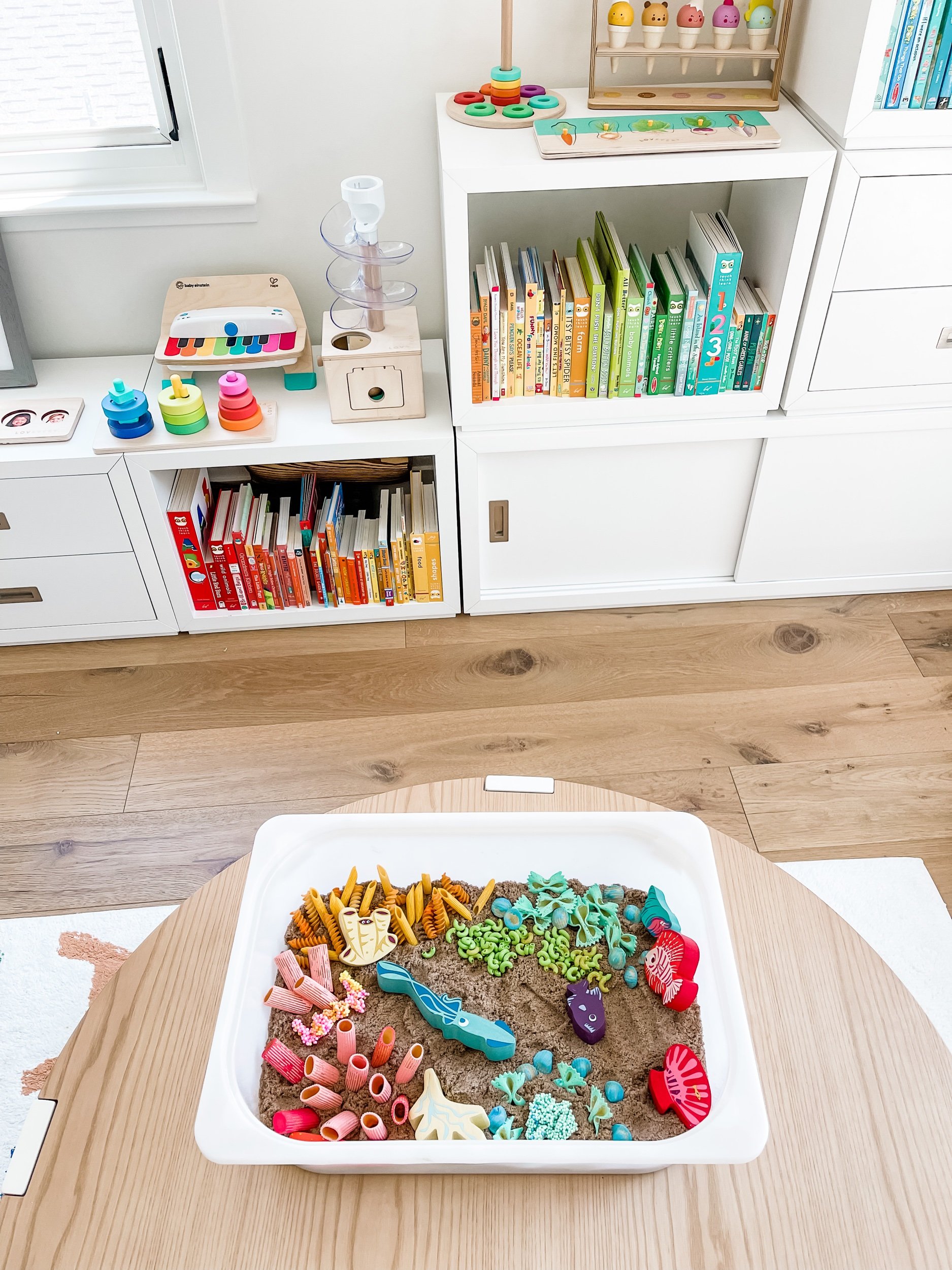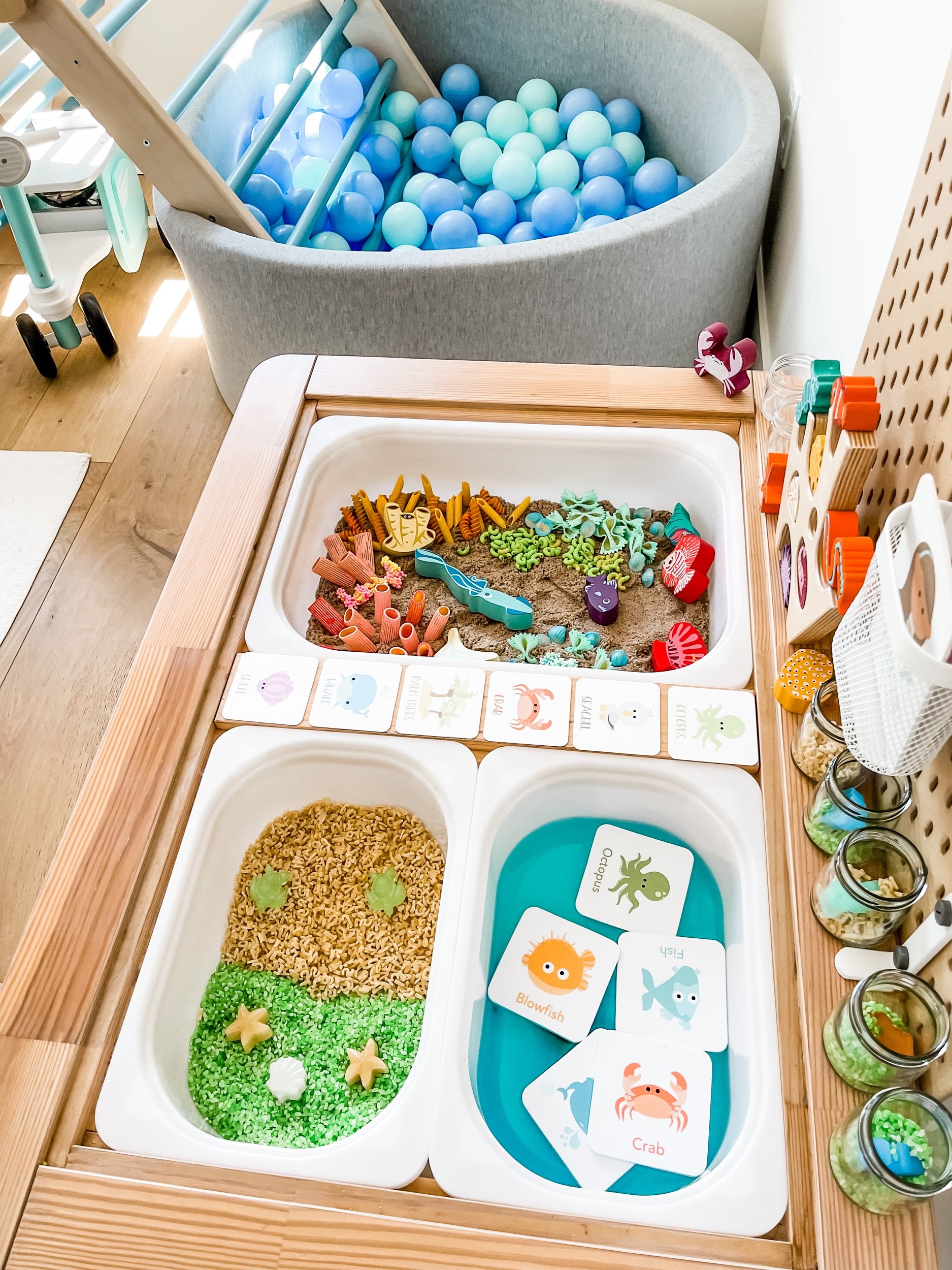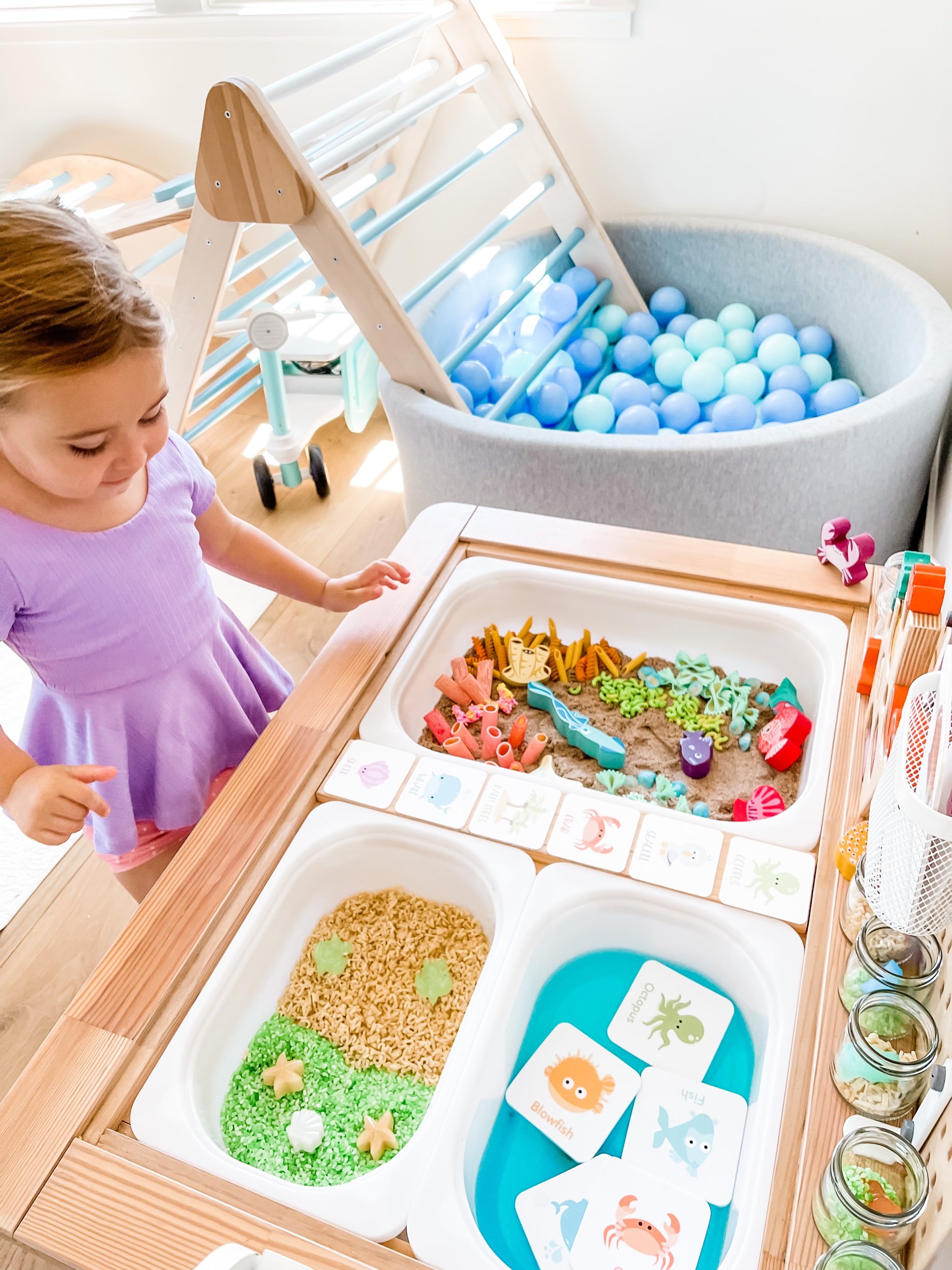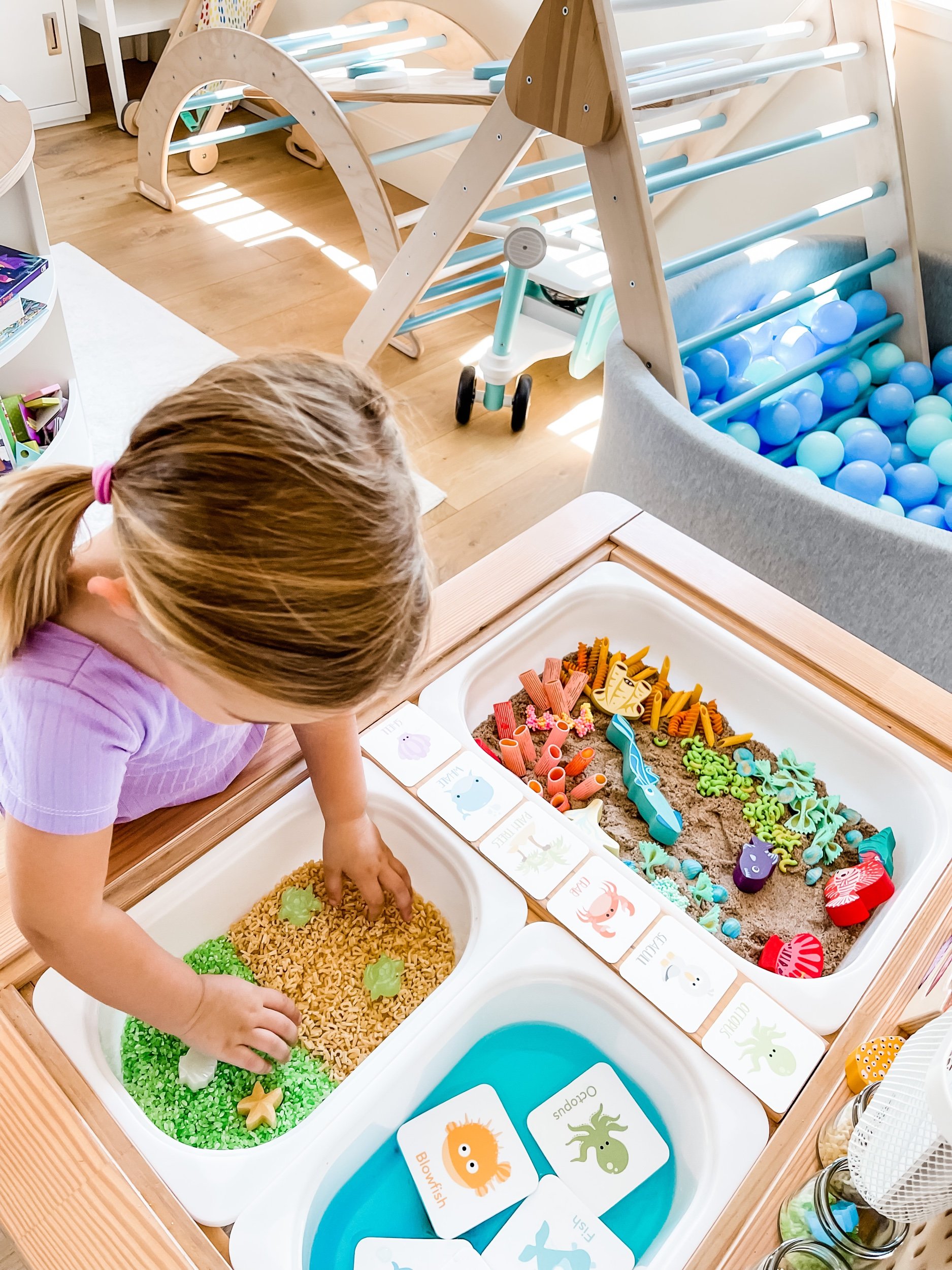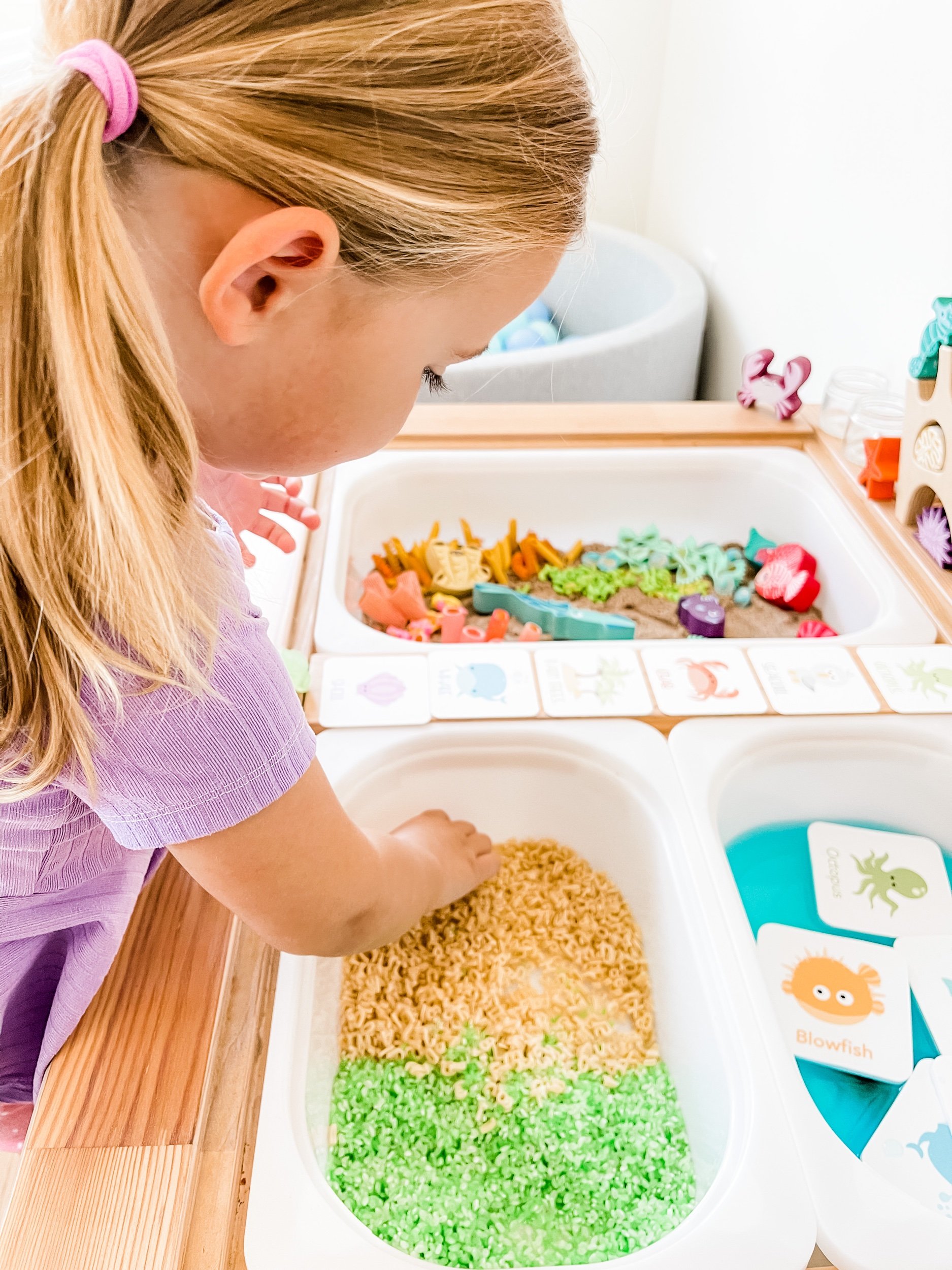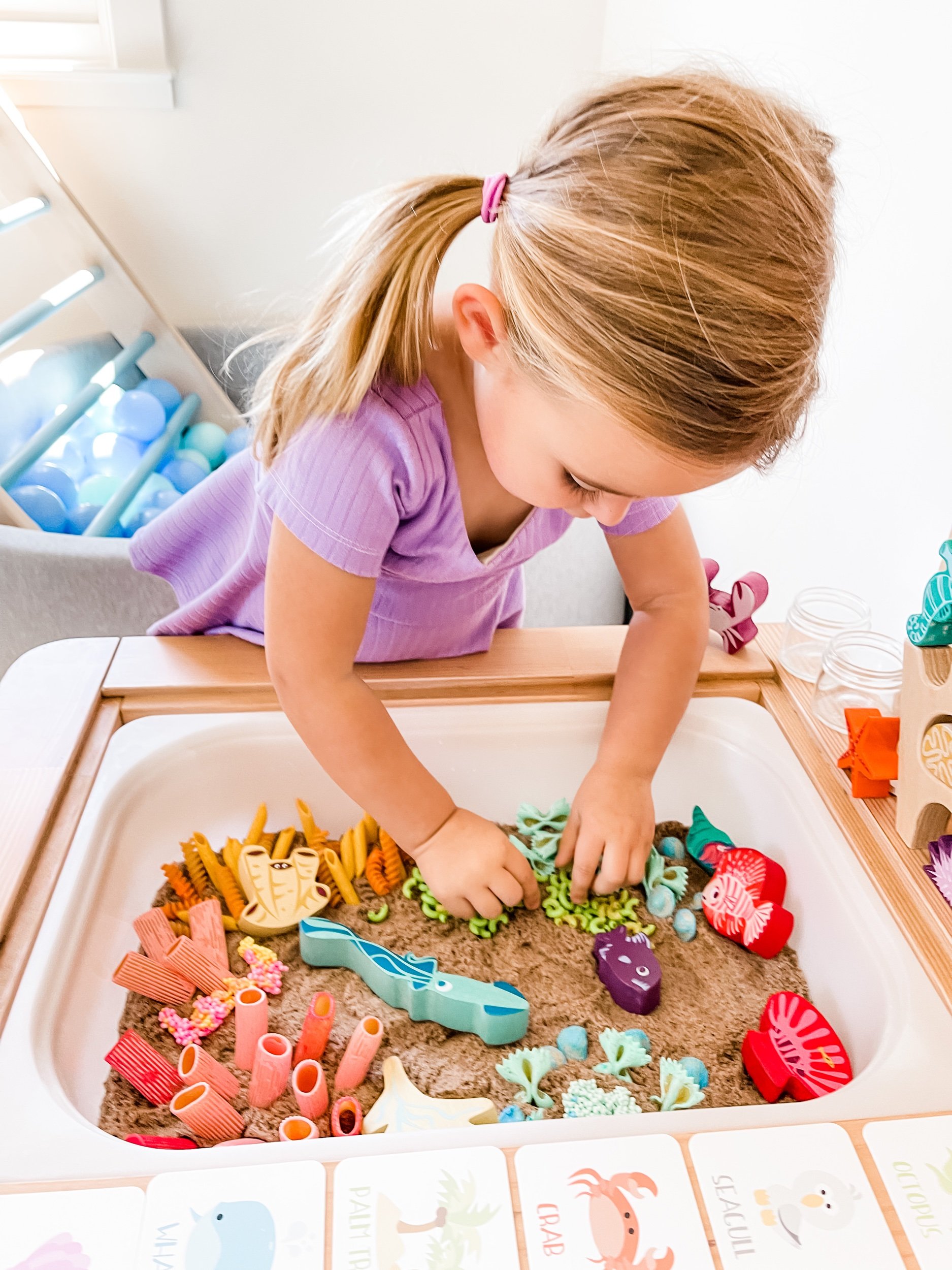Learning about the ocean through sensory play
Coral reefs are a vital and diverse ecosystem that play a crucial role in the ocean's biodiversity. But did you know that introducing your toddler to the world of coral reefs can be an exciting and engaging way for them to learn about the natural world? Through sensory play and kinetic sand, parents and educators can provide children with a hands-on and interactive learning experience that will foster a deeper connection to the ocean and its inhabitants.
Sensory play is an educational method that uses the five senses to help children learn and explore new concepts. Kinetic sand, in particular, is a great tool for sensory play because it is soft, pliable, and easy to mold and shape. According to research from the National Association for the Education of Young Children, children who engage in sensory play have a more significant understanding and retention of information.
When combined with foam bath time memory game cards featuring ocean animals, toddlers can learn about coral reefs and the animals that call them home. The cards are made with durable and safe materials, perfect for little hands to handle, and the colorful illustrations of ocean animals will capture the child's attention. Plus, it is a fun and interactive way for children to learn about coral reef animals and improve their memory skills.
Coral reefs are also home to a diverse range of marine life, and according to the National Ocean Service, they provide food and medicine for millions of people. By teaching children about coral reefs, they will develop a sense of environmental stewardship and an understanding of the importance of protecting these ecosystems.
Moreover, incorporating these educational activities into daily routines at home, daycare, or in the classroom is easy and accessible for parents, caregivers, and educators. As a result, children will have a more significant understanding and retention of information, and they will develop a deeper connection to the natural world.
In conclusion, learning about coral reefs through sensory play and kinetic sand is an effective and fun way for toddlers to explore and learn about the natural world. By purchasing foam bath time memory game cards to use with kinetic sand, parents and educators can provide children with an even more interactive and enjoyable learning experience. For more information on coral reefs and their importance, visit reputable sources such as the National Ocean Service and the Coral Reef Alliance.
Lesson Plan: Exploring Ocean Life and Animals
Week-long Lesson for Preschoolers
Objective: Students will learn about ocean life and animals through interactive activities, books, and games.
Monday: Introduction to the Ocean
Begin the lesson by showing students pictures of the ocean and asking them what they notice.
Read the book "The Magic School Bus: At the Waterworks" to introduce the concept of the ocean and the creatures that live there.
Have students create a class mural of the ocean and the animals they learned about.
Tuesday: Fish
Read the book "Rainbow Fish" to introduce the concept of fish and their different colors and patterns.
Have students create their own fish using construction paper and paint.
Play the game "Fishy, Fishy" where students take turns being "it" and pretending to be different types of fish.
Wednesday: Marine Mammals
Read the book "A Dolphin Named Bob" to introduce the concept of marine mammals and the different types that live in the ocean.
Have students create their own marine mammal using clay or play dough.
Play the game "Whale, Whale, What Do You See?" where students take turns being the "whale" and identifying different marine mammals.
Thursday: Shells and Crustaceans
Read the book "The Very Hungry Hermit Crab" to introduce the concept of shells and crustaceans.
Have students collect and examine different types of shells and crustaceans.
Play the game "Shell Match" where students match different shells to the corresponding crustacean.
Friday: Review and Assessment
Review the concepts learned throughout the week by playing a game of "Ocean Animal Charades."
Have students complete a simple assessment, such as a matching game or a fill-in-the-blank worksheet.
End the lesson by having students share their favorite part of the week's activities.
Note: The specific activities, books, and games may vary depending on the resources available to you, but the overall structure of the lesson plan can be followed. Also, make sure to adjust the time and the activities to fit the abilities of the students.



